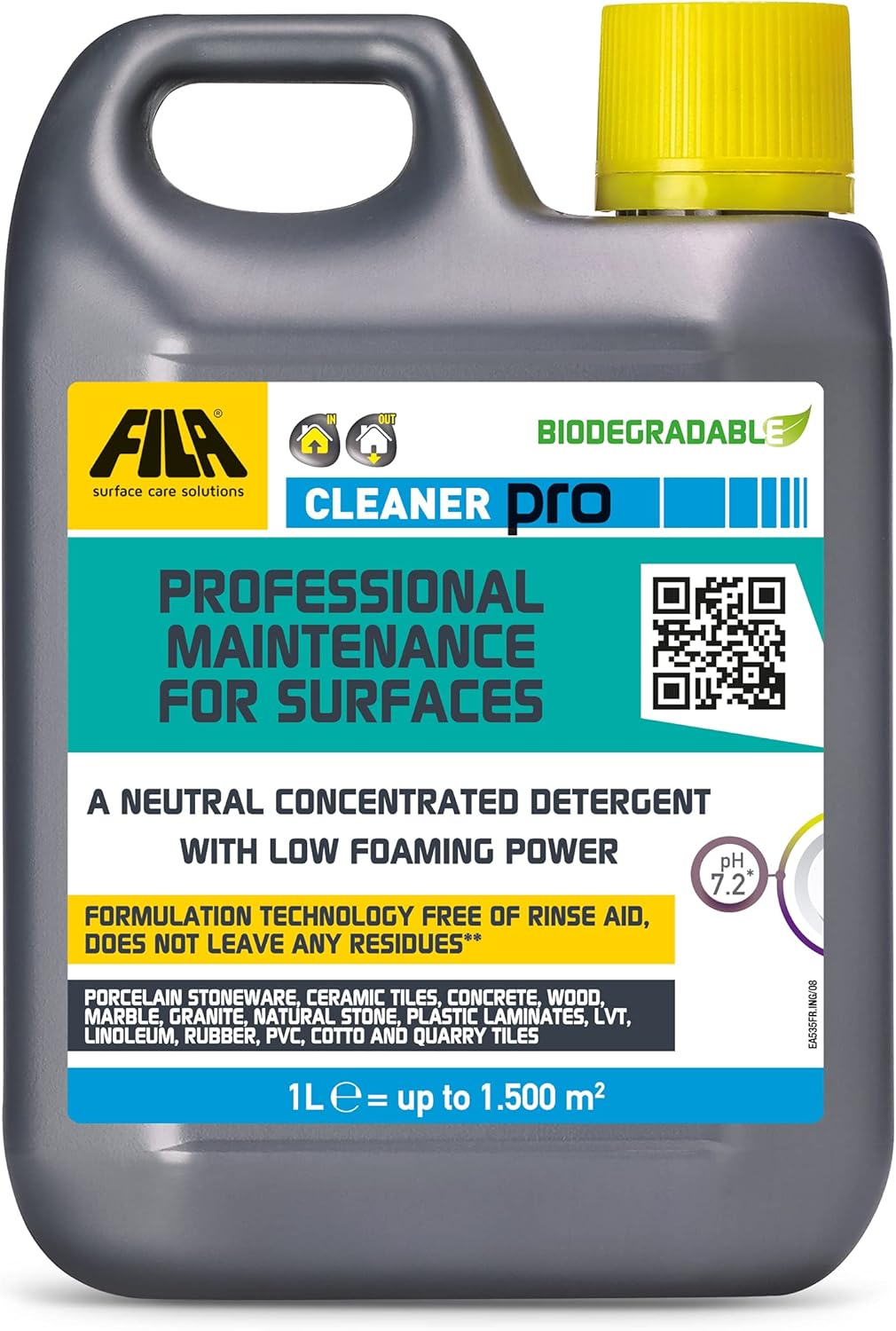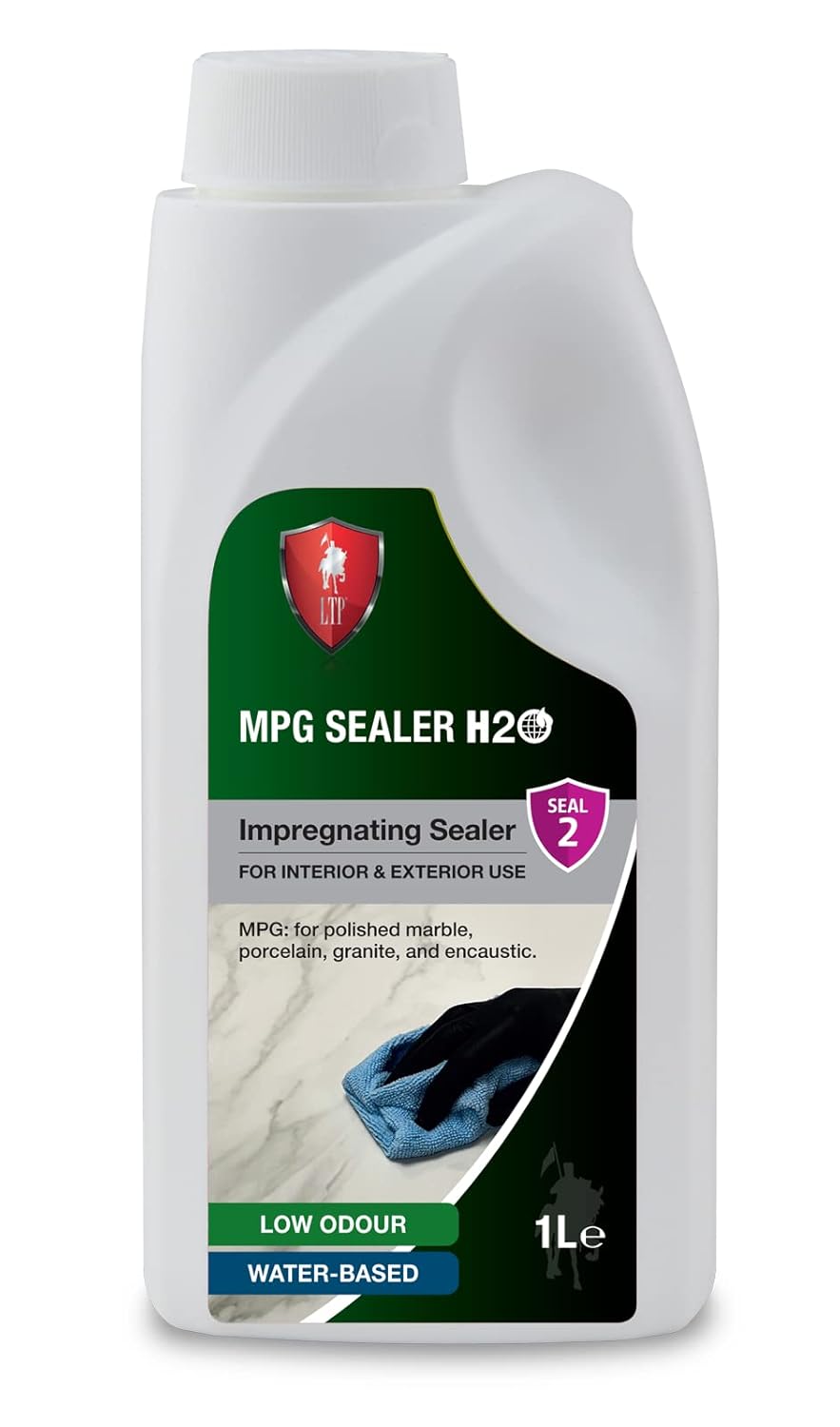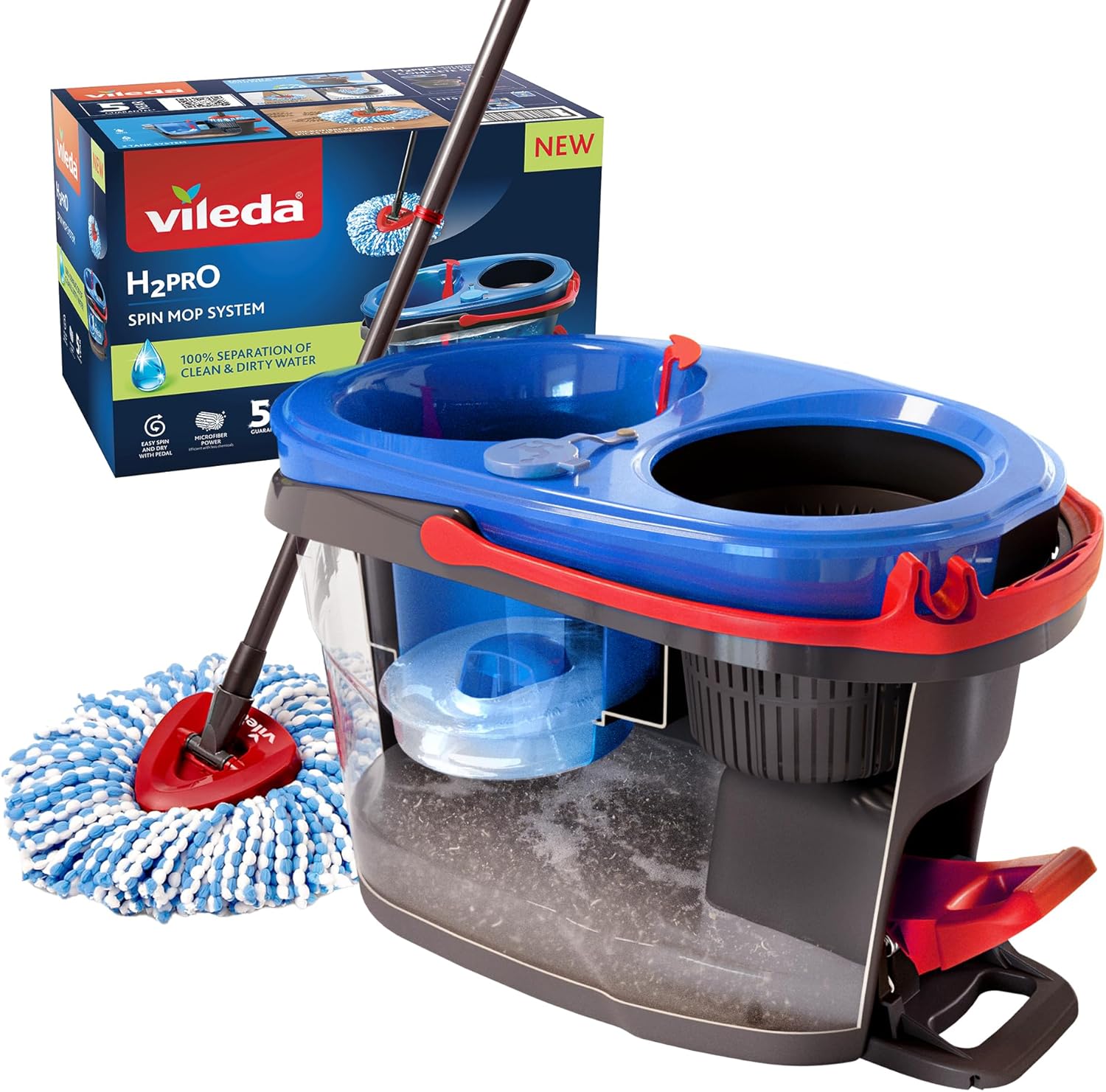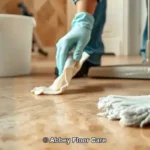
Last Updated on November 12, 2025 by David
Key takeaways from the article, “What Is the Best Product for Terrazzo Cleaning?”
- Use pH-neutral cleaners for routine care to avoid etching or dulling the surface, especially when marble chips are present in the terrazzo mix.
- Alkaline cleaners are suitable for ingrained soils, but must be rinsed thoroughly and resealed if left to dwell for extended periods.
- Avoid acidic, bleach-based, or abrasive products, as these can permanently damage terrazzo and compromise its long-term appearance.
- Topical sealers are a valid option when properly maintained and topped up, offering enhanced gloss and protection for high-traffic areas.
- Regular maintenance with soft tools and prompt spill response helps preserve the finish and reduce the need for frequent deep cleaning.
Gain Insight into Terrazzo Floors

What is Terrazzo Made Of?
Terrazzo is a composite flooring material created by combining marble, quartz, granite, or glass chips into a cement or epoxy base. Once laid, the surface undergoes grinding and polishing, resulting in a smooth, decorative finish that highlights the beauty of the embedded materials. Due to its natural stone composition, terrazzo is sensitive to harsh chemicals, necessitating gentle care to maintain its aesthetic appeal and longevity.
Pro Tip: Recommended Products for Daily Terrazzo Maintenance Cleaning

Fila Pro Floor Cleaner
|

LTP MPG Sealer H20
|

Vileda H2PrO Spin Mop System
|
Why Does Terrazzo Require Special Care?
Unlike ceramic or vinyl floors, terrazzo is porous and can absorb liquids if not adequately sealed. Using acidic cleaners, bleach, or abrasive tools can dull the surface or even cause permanent staining. To maintain the pristine condition of terrazzo floors, it's crucial to utilise pH-neutral products specifically designed for stone surfaces. Consistent maintenance not only preserves the shine but also helps prevent long-term damage that can be costly to rectify.
Avoid Common Cleaning Mistakes to Protect Your Terrazzo

Why Are Acidic Cleaners a Risk for Terrazzo?
Acid-based products such as vinegar, lemon juice, or lime scale removers can etch terrazzo surfaces, particularly those containing marble chips. Even a single application may leave dull patches or cause irreversible damage. Homeowners often mistakenly believe that natural acids are safe for cleaning, but terrazzo reacts differently compared to ceramic or porcelain tiles, making it essential to choose cleaning products carefully.
What Is the Problem with Steam and Bleach for Terrazzo?
Steam cleaners may seem convenient, but the high temperature and pressure can weaken sealants and force moisture into the substrate. Bleach, on the other hand, is alkaline and can discolour terrazzo over time. Both methods risk compromising the integrity of the floor, especially in older properties or areas where the sealant may be worn.
How Do Abrasives Ruin the Finish of Terrazzo?
Using scouring pads, gritty powders, or stiff brushes can scratch the polished surface of terrazzo. Once scratched, the floor loses its reflective quality and becomes increasingly harder to clean. For deep-cleaning, always opt for soft pads and non-abrasive tools specifically designed for stone surfaces. Preserving the finish is crucial for ensuring long-term beauty and ease of maintenance.
Choosing the Most Effective Deep-Cleaning Product for Terrazzo – When pH-Neutral Cleaners Fall Short

What Makes a Cleaner Safe for Terrazzo Floors?
Safe terrazzo cleaners are pH-neutral, non-acidic, and free from harsh solvents. Given that terrazzo often contains marble chips, it reacts poorly to acidic or alkaline products. A balanced cleaner effectively lifts dirt without damaging the surface or sealant. Look for labels that specify compatibility with natural stone or terrazzo.
In situations where terrazzo floors are heavily soiled—particularly in kitchens, hallways, or commercial spaces—standard pH-neutral cleaners may not possess the potency required to eliminate ingrained grime. Over time, oils, grease, and tracked-in dirt can settle deeply into the porous surface, especially if the sealant has diminished.
Why Is an Alkaline Cleaner Sometimes Necessary for Terrazzo?
Alkaline cleaners are specifically formulated to break down organic soils, grease, and stubborn residues that neutral products struggle to remove entirely. These solutions work by emulsifying contaminants, lifting them from the pores of terrazzo so they can be rinsed away effectively. For deeply embedded grime, a more powerful alkaline formulation may be essential to restore the floor’s original appearance.
Rinse Thoroughly to Prevent Surface Damage After Cleaning
Although effective, alkaline cleaners must be applied with caution. Leaving them on the surface for too long can strip away protective sealers or cause discolouration. After the recommended dwell time—typically between 5 to 15 minutes—rinse the floor thoroughly with clean water. Employ a wet vacuum or perform multiple mop passes to ensure that no residue remains. Inadequate rinsing can lead to a chalky film or long-term dullness, compromising the floor's appearance.
Resealing May Be Required Following Deep Alkaline Cleaning
If the cleaner required extended dwell time to effectively break down soils, or if the floor was previously unsealed, it is advisable to reseal the terrazzo post-cleaning. Alkaline products can open the stone’s pores, making it more susceptible to future staining. Applying a breathable impregnating sealer aids in restoring protection and helps maintain the floor’s resilience against moisture and dirt.
Step-by-Step Guide to Deep-Cleaning Your Terrazzo Floor
Preparing the Terrazzo Surface for Deep Cleaning
Begin by removing loose dust and debris using a soft-bristle broom or a vacuum set to the hard floor mode. Avoid dragging furniture or employing metal-edged tools, as these can scratch the surface. If the floor has old polish or residue, consider utilising a safe terrazzo stripper before commencing the deep-cleaning process.
Applying the Cleaner Safely to Terrazzo Floors
Mix your chosen cleaner in accordance with the manufacturer's guidelines. Apply it evenly across the floor using a microfiber mop or soft applicator. Allow the solution to dwell for 5 to 10 minutes to loosen embedded dirt; however, ensure it does not dry on the surface. Work in manageable sections to maintain control and avoid streaking.
Effective Agitation and Rinsing Techniques for Terrazzo
Utilise a soft white pad or a slow-speed rotary machine equipped with a non-abrasive brush to agitate the surface effectively. This technique helps lift grime from the pores of terrazzo without risking scratches. Rinse thoroughly with clean water, changing the water frequently to avoid redepositing dirt. A wet vacuum can expedite the process and enhance results.
Drying and Buffing for a Lasting Shine on Terrazzo
Allow the floor to air dry completely or utilise a dry microfiber mop to eliminate any residual moisture. Once dry, buff the surface with a clean white pad to restore a light sheen. If the floor still appears dull, it may indicate the need for resealing or polishing, particularly in high-traffic areas where wear is more pronounced.
Recognising When to Reseal Your Terrazzo Floor
Identifying Signs That Your Seal Has Worn Off
If your terrazzo floor exhibits dullness, absorbs water rapidly, or shows signs of staining, the sealant may have deteriorated. A simple water-drop test can assist in determining this: place a few drops on the surface and observe the reaction. If the water darkens the stone or disappears within seconds, it’s time to reseal.
Selecting the Right Sealer for Terrazzo
For homes in the UK, solvent-based impregnating sealers such as Lithofin Stainstop or Fila MP90 provide long-lasting protection without altering the floor's appearance. These sealers penetrate the surface, blocking moisture and stains without forming a visible layer that can detract from the natural beauty.
How to Apply Sealer at Home Effectively
Thoroughly clean the floor and allow it to dry for a minimum of 24 hours. Apply the sealer evenly using a lint-free cloth or sponge, working in small sections to ensure comprehensive coverage. Allow it to absorb for the recommended duration, then wipe away any excess. In high-traffic areas, a second coat may be necessary. Always ensure the space is well-ventilated and follow the safety instructions detailed on the label.
Ongoing Maintenance Strategies for Terrazzo After Deep Cleaning
Essential Weekly and Monthly Maintenance Tips
To keep terrazzo looking its finest, dry mop regularly with a microfiber pad to capture dust and grit. For weekly cleaning, utilise a diluted pH-neutral cleaner and avoid over-soaking the floor. Monthly, inspect high-traffic areas for signs of wear and reapply cleaner as needed. Avoid excessive moisture, which can weaken sealants over time and lead to long-term damage.
Best Mops and Tools for Continuous Care of Terrazzo
Microfiber mops are ideal for terrazzo floors because they effectively trap fine particles without scratching the surface. Avoid using sponge mops, as they can push dirt deeper into the pores. For larger areas, consider a spray mop with refillable cartridges that allow for controlled application of stone-safe solutions. Always rinse mop heads thoroughly after use to prevent residue build-up that could harm the floor.
How to Address Spills and Stains Promptly on Terrazzo Floors
Always blot spills immediately with a soft cloth or paper towel. Avoid rubbing the area, as this can spread the stain. For oily or coloured spills, apply a small amount of stone-safe cleaner and rinse with clean water. If a stain remains, use a baking soda and water poultice, but ensure to test it first to confirm it won’t affect the finish. Acting quickly helps prevent permanent marks and keeps your floor looking fresh.
Frequently Asked Questions About Terrazzo Floor Cleaning
Can I Use Vinegar on Terrazzo?
No. Vinegar is acidic and can etch terrazzo surfaces, especially those containing marble chips. Even diluted vinegar can lead to dull spots or long-term damage. Always opt for a pH-neutral cleaner specifically formulated for stone surfaces to ensure the longevity of your floor.
What If My Floor Is Already Damaged?
If your terrazzo has scratches, stains, or dull patches, deep-cleaning alone may not restore its original appearance. You might require professional honing or polishing to eliminate surface damage. In some instances, resealing or applying a stone-safe polish can enhance the look, but restoration is often the best option for heavily worn floors.
How Often Should I Deep-Clean My Terrazzo Floor?
For most homes in the UK, deep-cleaning terrazzo floors every 6 to 12 months is sufficient. High-traffic areas, such as hallways or kitchens, may require more frequent attention. Regular maintenance between deep cleans is crucial for extending the life of the sealant and ensuring the floor remains visually appealing year-round.
The article What Is the Best Product for Terrazzo Cleaning was first found on https://www.abbeyfloorcare.co.uk

